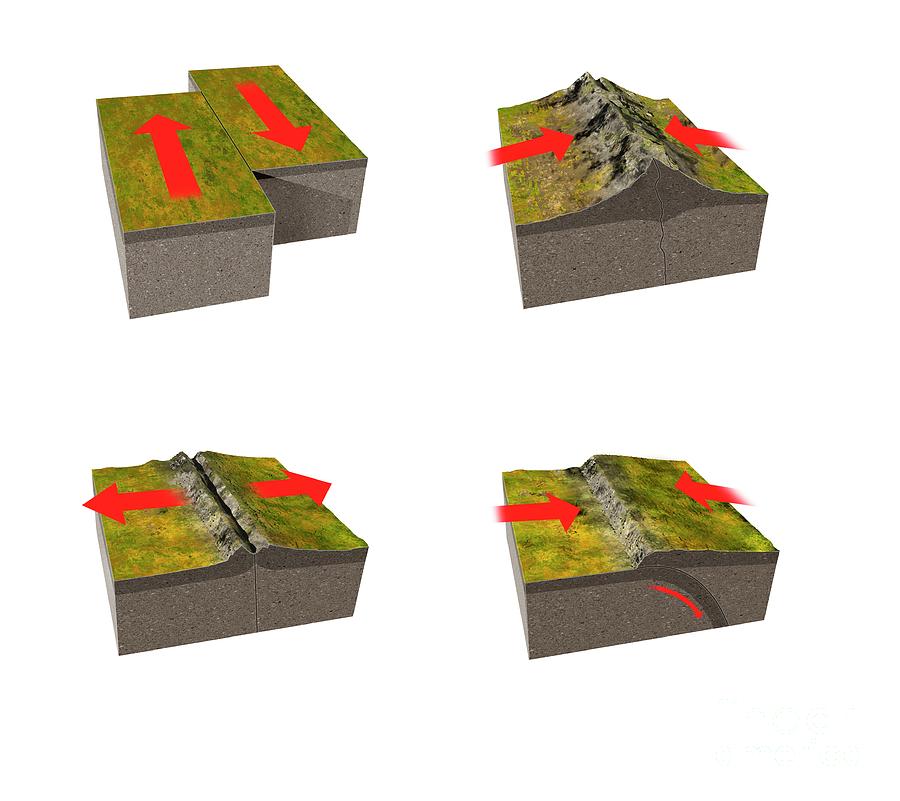

Whenever a subduction zone is formed, the subducted plate will end up being partially melted by the earth’s internal magma and molten. Convergent boundaries are commonly associated with larger earthquakes and higher volcanic activity. When an oceanic plate converges with a continental plate, the oceanic crust will always subduct under the continental crust this is because oceanic crust is naturally denser. When two oceanic plates converge, the denser plate will end up sinking below the less dense plate, leading to the formation of an oceanic subduction zone. Neither continental crust will subduct underneath one another because of their similar densities. When two continental crusted plates converge, they eventually collide and end up producing mountains this was how the Himalayan Mountains were created. As previously mentioned, depending on what type of crust each converging plate is, different geographic features are formed. When two plates move towards each other, the boundary is known as a convergent boundary. Divergent plate boundaries are commonly associated with shallow earthquakes. On the other hand, if two oceanic plates diverged, a mid ocean ridge would form, which is also known as a spreading center. For example, when two continental plates diverge from each other, an ocean basin is created due to the separation of land. Depending on what type of lithospheric crust each diverging plate is, whether oceanic or continental, varying geographic features are formed. An example of a divergent plate boundary is the Mid-Atlantic Ridge. Spreading centers and areas where new ocean floor are generally located at divergent plate boundaries.

In the case of divergent plate boundaries, two of earth’s plates move away from each other.

There are essentially three types of plate boundaries, which are divergent, convergent, and transform. \( \newcommand\)Ĭategorization of plate boundaries is based off of how two plates move relative to each other.


 0 kommentar(er)
0 kommentar(er)
